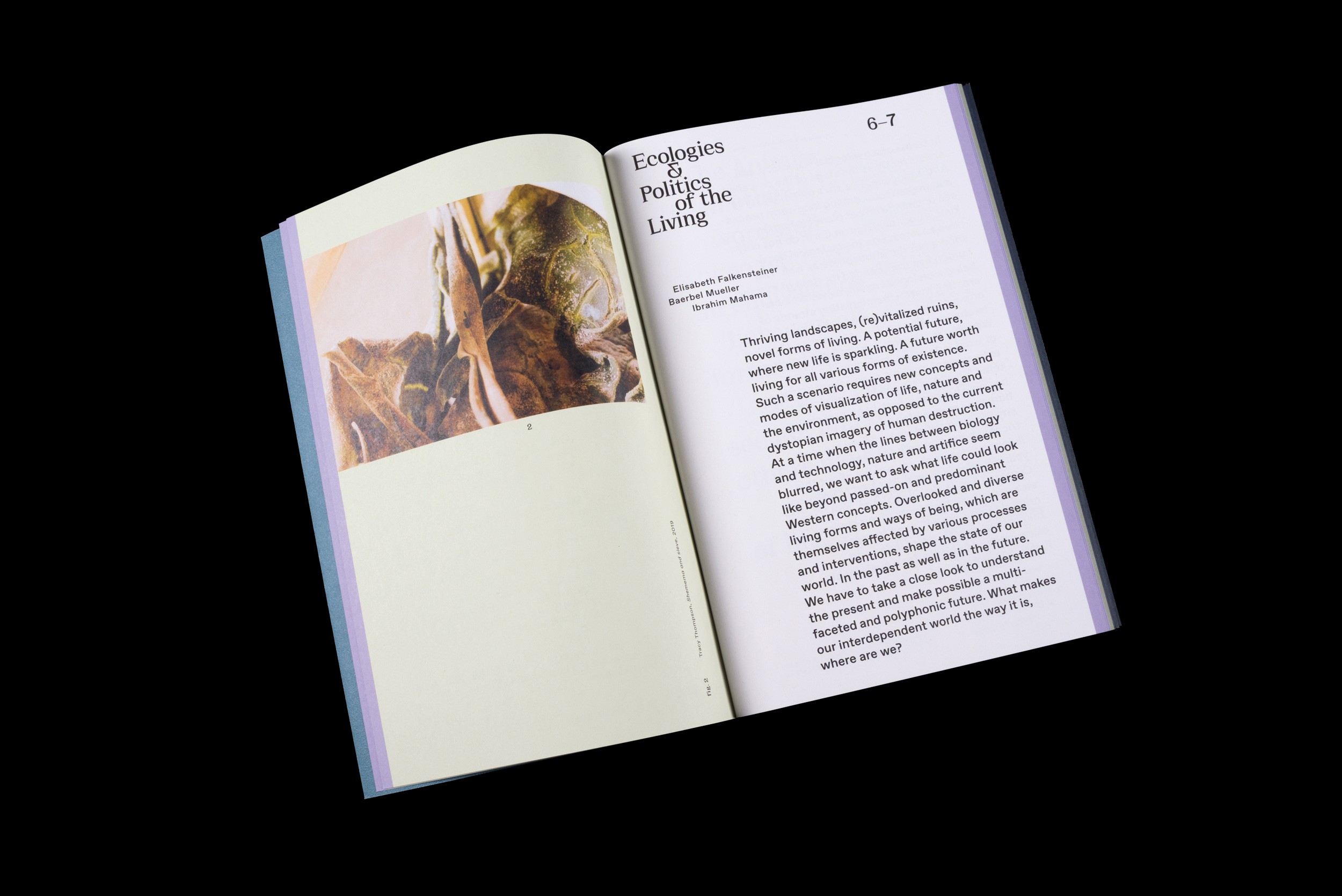Ecologies and Politics of the Living
- Editor(s): Elisabeth Falkensteiner, Ibrahim Mahama, Baerbel Mueller
- Publisher: Angewandte Innovation Lab
- Year: 2021
- Size: 25 × 16.3 cm
- Number of pages: 96
Exhibition catalogue published on the occasion of the eponymous exhibition at the Angewandte Innovation Lab as part of the “Vienna Biennale for Change 2021.”
With contributions by Eric Gyamfi, Mae-ling Lokko, Ibrahim Mahama, Uriel Orlow, New-Territories (s/he_f.Roche), Tracy Naa Koshie Thompson, Susanne Wenger
“Thriving landscapes, (re)vitalized ruins, novel forms of living. A potential future, where new life is sparkling. A future worth living for all various forms of existence. Such a scenario requires new concepts and modes of visualization of life, nature and the environment, as opposed to the current dystopian imagery of human destruction.”
With a post-anthropocentric reading, the exhibition "Ecologies and Politics of the Living" explored speculative narratives that break up the logic of linear development and perpetual progress and presented a polyphonic collection of concepts focusing on planetary coexistence.
Multilayered, polyrhythmic, non-linear, rhizomatic – these four terms constituted the point of departure for the concept of the book. They reflect on the topics negotiated in the exhibition and define the intended feel and experience of the book. The design translates the idea of non-linear time, as well as the ongoing processual aspect of the works in the exhibition into the form of a book and uses layers and rhythms as a way of structuring and ordering.
The saddle stitch binding results in a so called “creep” at the edge of the book, where the inner pages are pushed further outwards than the outer ones. The creep is commonly chopped off, in order to create a straight book edge. In “Ecologies and Politics of the Living” the layering of the paper is left visible and additionally accentuated through a strip of colour on each page of the book, making the creep allude to a cross section of geological layers of, for example, water and soil.
The text contributions include conversations, descriptive texts about the artist’s work and more experimental texts. The typographic concept plays with indentations and text that doesn’t always align. There are moments of expansion and compression. The text appears to be moving and in flux. The images are scattered throughout the book and not necessarily positioned next to the text that refers to them, enabling productive juxtapositions.
The structure of the book is interrupted by quotes on the anthropocene, printed on bright yellow paper. The paper is slightly transparent, resulting in an overlapping of texts and images and an aesthetic exploration of the entanglements between nature, economy and politics. The rest of the book is printed on recycled paper, creating a stark contrast with the almost artificial glow of the yellow – also used for a fold out poster showing exhibition views.
Studio photography by Sophie Pölzl
✷ One of The Most Beautiful Austrian Books 2021











